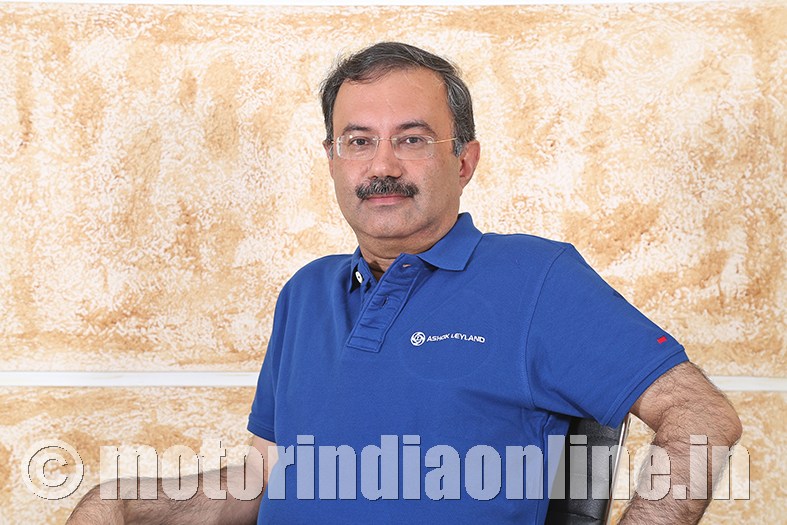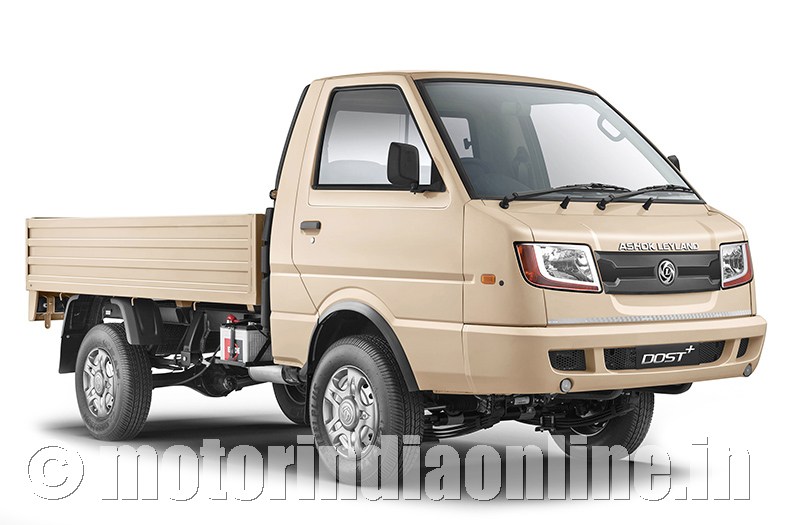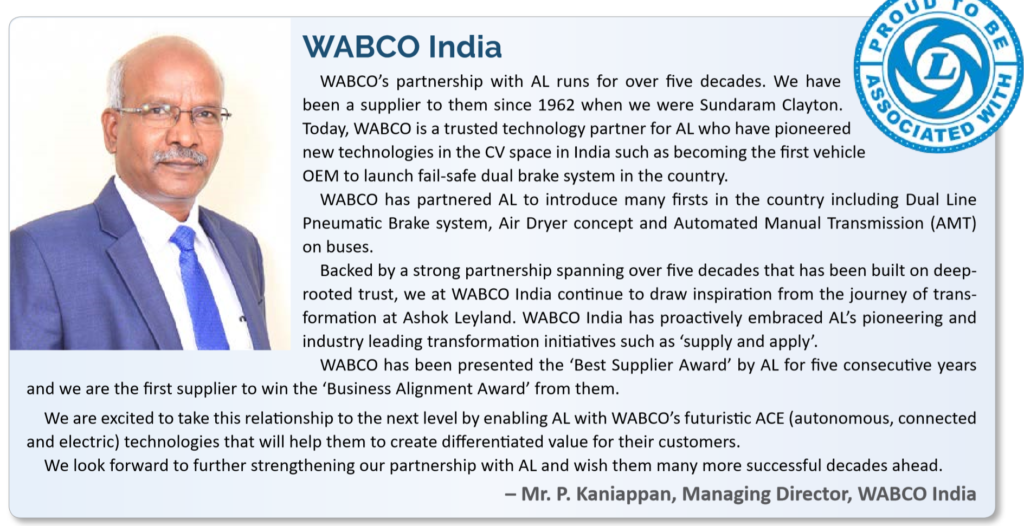“The LCV market is huge and the challenges are not market related but to our ability to deliver new products in the portfolio gaps. We need to recover the lost time and bring glory which this business deserves,” says Mr. Nitin Seth, President – LCV, Ashok Leyland Ltd. (AL)

Excerpts:
Can you share the major milestones and developments in the segment during the 70-year journey and on the future plans?
LCV made a late entry into the company’s product program. To go back in time, the initial thrust on the LCV market in India was provided by various Japanese companies with their Indian partners during the mid-eighties, and it picked up momentum during the early 2000s with the launch of sub-3 ton models by the other established CV players. For AL, that would have been the right time to make an entry, but then it did not have the requisite technology and partner.
The agreement with Nissan was signed during 2009 and the actual work started in 2010. The first LCV model DOST was launched in 2011. Though our association did not continue, we were quite happy with the technology of Nissan, and it gave us the opportunity to develop new models for both the domestic and export markets. India is still evolving in this segment and today the LCV market share stands at 64% as against 70% of the global in CV industry. Volumes are high, but not the value.
Nevertheless, as the No.2 player in the Indian market, AL needed to have the range in its portfolio. However, I can say that despite a decade late entry our products are surely the best in class in terms of fuel efficiency, comfort and special features, and ahead of competition in terms of quality, reliability and technology.
We have currently three products, namely, DOST 2.5-2.75 ton GVW, Partner 6.0-7.2 ton GVW and Mitr bus 27 & 31 seat variants. There are too many gaps in our portfolio and currently address 38% of the Indian market and the rest 62% goes unaddressed. Our market share is 16% in the domain.
AL will be focussing to fill the gaps in future, but with the focus on 2.5 ton to 7.5 ton GVW trucks and 13 to 40 seats in bus, subject to max 7.5 ton GVW though volumes exist outside this range where our competitors are present.
Brief us about the manufacturing facilities and the plans to introduce new models down the timeline.
Our Hosur plant where LCVs are manufactured has a capacity of 50,000 vehicles per annum. Last year we sold 43,441 vehicles and very soon the figure will touch the optimum capacity mark. We have a 280-acre greenfield plant site at Pillaipakkam in Tamil Nadu allotted to us during the Nissan venture and transferred to us later, earmarked for expansion.
The management will take a decision on the location of LCV manufacturing in due course – whether at Hosur or at the new site. LCV’s share by volume in AL’s operations is 25% while the typical upside volume is 65% in the CV industry. This means that a big market for LCV is there, and it boils down to how fast we can address it.
The management has earmarked Rs. 400 crores to address the portfolio gaps and the same will be on the new platform. We will introduce the models starting from April 2020. This will coincide with the BS-VI emission norms implementation, and we are working towards the goal.
Despite the late entry, the LCV models of the company are popular in the market. Can you indicate the reasons and USPs to score over the competition in the crowded space?
Our LCV fuel efficiency is ahead and the best in the segment. It will be important to point out here that the ratio of kerb weight to payload is about 1 and the best in the class, also contributing to the fuel efficiency. The product has the latest technology, and while many were struggling during the BS-III to BS-IV transition, we had no issues as we were already BS-IV compliant at that time.
Also we have developed the LH drive for the Russian market which is Euro-5 compliant. Hence even during the BS-IV to BS-VI transition period with the deadline of 2020, we envisage no great challenges. We were the first to introduce power steering well before the mandatory rule and are offering AC in our cabs right from the beginning as an option, while the regulation discussions are on vis-à-vis the blower in the cab.
Also we were the first to offer tubeless radial tyres for LCVs, and this also contributed to the fuel efficiency. While there was that initial apprehension for the above vis-à-vis maintenance and payload capacities, the same were belied, and after seeing the performance, customers have opted for our products.
Thus the products are offered to the customer with superior features well ahead of the competition. As a result, we command a premium price and are still able to get the customers and see no price wars to garner market share. In the hub and spoke model, competition offers the products for inter- or intra-city application, and we offered DOST positioning it in between.
It had the requisite higher power and as well good manoeuvrability well suited to both inter- and intra-city applications. This way we were able to beat the competition and bring customers to our fold. Today we have over two lakh vehicles on the road performing to the fullest satisfaction of customers.
What are your key product application segments and the focus areas to address the local and export markets in future?
Most are deployed for general cargo and multi-purpose applications, not in the captive market segment. They are also supplied for special applications like reefer, aerial platform and waste management. We do not undertake any special body supplies directly, for in such a case, as a manufacturer, we need to get the ARAI certification.
Applications are not well defined and hence invariably we supply the cab chassis or cab with load bodies. Almost 75% of the customers take cab with load body half deck or high deck and the rest 25% take the cab chassis. For any of the applications like reefer, they do the necessary body building and get it approved through the RTO.
As for the focus areas, we will be introducing models on the new platforms, a model for every ton from 2.5 ton to 7.5 ton. The new models will be EV-compliant from the beginning, and hence we are also ready for the likely EV shift.
We are currently exporting to some of the SAARC countries like Bangladesh, Sri Lanka and Nepal about 2,000 vehicles per annum, but that’s not enough. We have developed the LH drive for the Russian market and the same is undergoing trials. We will be launching it in September. Earlier we were not allowed to do the LH drive and hence could not address the big markets in Gulf, Africa, Russia and Ukraine.
With this launch, our exports will open up in a big way.
Tell us about your sales and service network and expansion plans.
We have 113 dealerships and 450 outlets dedicated for high customer service. We have 65% of the service market share. Our nearest competitor has only 40%. This means customers come back to our workshop for service. All the 113 dealerships are 3S while the outlets are essentially 2S, and these have 2/3 bays to attend to the service issues.
The short-term goal is to reach 100,000 vehicles by 2022, and to achieve it I am fast-tracking all the projects. We have a dedicated team of about 250 engineers for product development located at the AL technical centre at Vellivoyalchavadi in Chennai. Spare parts are routed only thro’ dealers, and this is one of the many reasons for the high service revenue.
Unlike the M&HCV segment where trucks travel to far off places, LCVs invariably operate within 100 to 200 km range and hence can come back to their base for service and spares.
There are no plans to expand the 113 dealerships, but the number of outlets will be increased. There are some interior regions where service facilities are not currently available, and soon we will have them in place to strengthen the pan-India operations.

